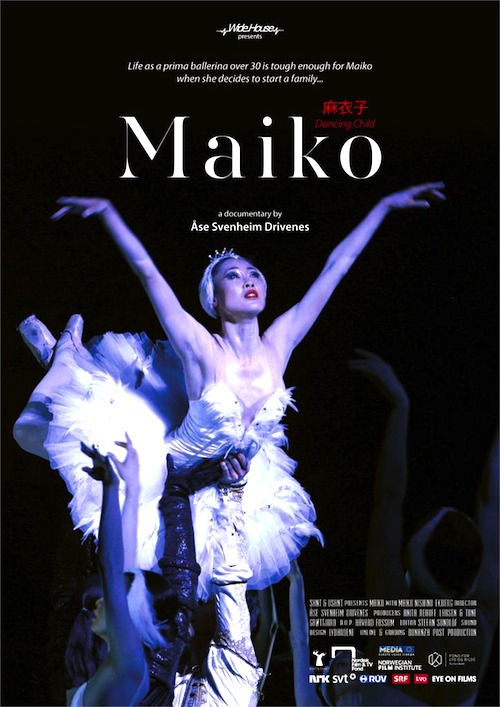By Joe Bendel. For a prima ballerina, Tchaikovsky’s Swan Lake is one of the most demanding ballets to perform. You’ve seen Black Swan, right? Well, try dancing the featured role a few months after pregnancy. Maiko Neshino set out to do exactly that. The question is not whether she has the drive or the talent, but whether she has enough time to rebound physically. Åse Svenheim Drivenes follows Neshino through rehab and rehearsals in the intimate documentary Maiko: Dancing Child, which screens during the 2015 Los Angeles Film Festival.
 It is almost too much, but the name Maiko really means “Dancing Child.” As is the case with truly elite dancers, her talent was indeed discovered at an early age. Neshino’s family made substantial lifestyle-effecting sacrifices to send her abroad to study. Consequently, she understood quite clearly failure was not an option. At the point the film picks up, she has been remarkably successful, maintaining her position as a principal dancer with the Norwegian National Ballet well into her thirties—and then she finally gets pregnant.
It is almost too much, but the name Maiko really means “Dancing Child.” As is the case with truly elite dancers, her talent was indeed discovered at an early age. Neshino’s family made substantial lifestyle-effecting sacrifices to send her abroad to study. Consequently, she understood quite clearly failure was not an option. At the point the film picks up, she has been remarkably successful, maintaining her position as a principal dancer with the Norwegian National Ballet well into her thirties—and then she finally gets pregnant.
This was something she and her husband always wanted but never knew how to schedule, so they do the best they can. Most importantly, they have a happy and healthy baby. However, Drivenes is far more interested in the comeback process than the pregnancy. Swan Lake is the last significant role Neshino has yet to play, so she intends to honor her commitment, but it would be tough even under the best of circumstances.
Ballet is a graceful form of artistic expression, but those who are not part of its exclusive world will be a bit taken aback by the punishing nature of her training regimen. This is not for the faint of heart. Viewers might also get sick of hearing the same musical passage over and over again.
Frankly, it is a minor miracle the dancers never snap from the mind-torturing repetition.
Of course, the camera absolutely loves Neshino. She is elegance personified, so we can well understand why she has become the face of the Norwegian company, while her Horatio Alger-esque background makes her an even more compelling figure to root for. Drivenes also gives the audience an inside peak into to the training and rehearsal process, sort of in the spirit of Wiseman’s La Danse, but in more economical and contextualized servings.
Throughout the film, everyone makes it acutely plain nothing is guaranteed when it comes to ballet. Although it clocks in at a relatively concise seventy minutes, viewers will walk away feeling they have a good understanding of who Neshino is and what sort of professional and artistic challenges she faces. Recommended for patrons of dance and performing art docs, Maiko: Dancing Child screens this Sunday (6/14) and Tuesday (6/16) as part of this year’s LAFF.
LFM GRADE: B+
Posted on June 13th, 2015 at 11:55am.